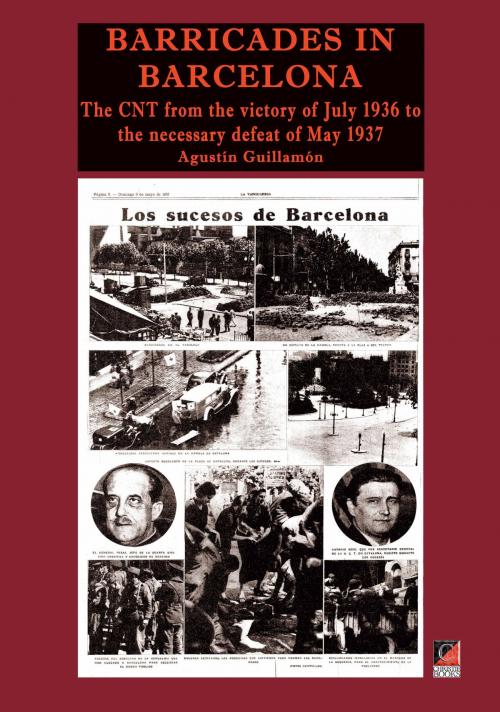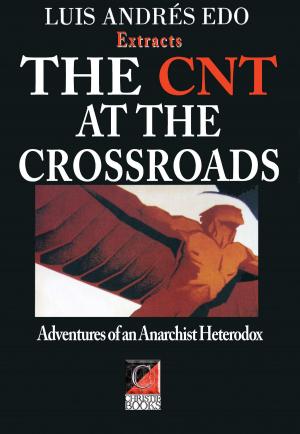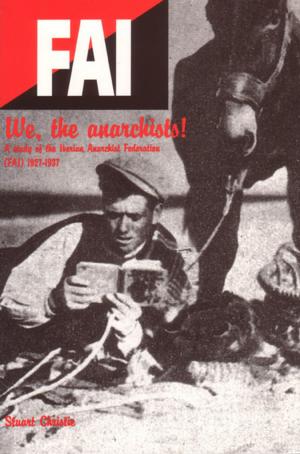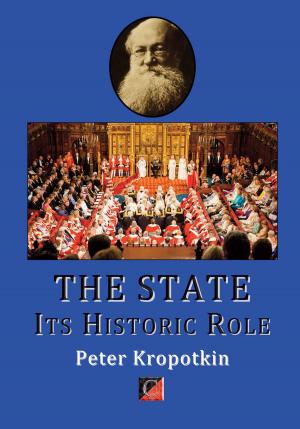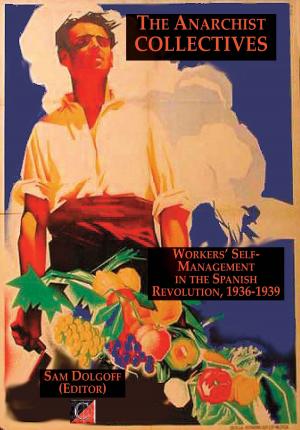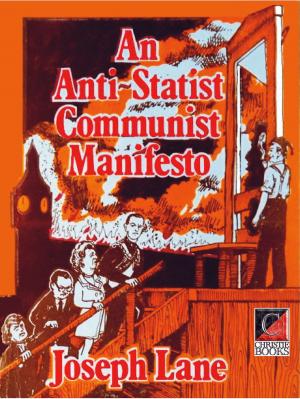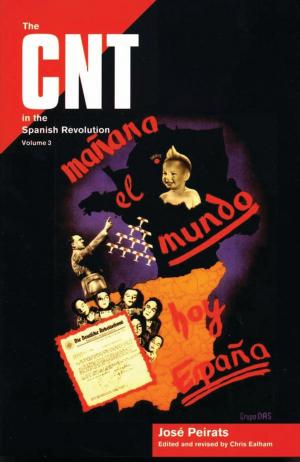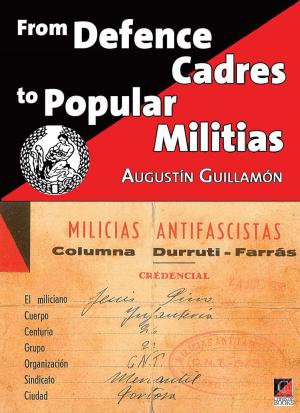BARRICADES IN BARCELONA
The CNT from the victory of July 1936 to the necessary defeat of May 1937
Nonfiction, History, Revolutionary, Spain & Portugal, Biography & Memoir, Political| Author: | Agustín Guillamón | ISBN: | 1230001316711 |
| Publisher: | ChristieBooks | Publication: | August 20, 2016 |
| Imprint: | ChristieBooks | Language: | English |
| Author: | Agustín Guillamón |
| ISBN: | 1230001316711 |
| Publisher: | ChristieBooks |
| Publication: | August 20, 2016 |
| Imprint: | ChristieBooks |
| Language: | English |
BARRICADES IN BARCELONA focuses on Barcelona in 1936-1937; it provides an account of the street battles and victory of July 1936, examines the defence and neighborhood committees that defeated the uprising in the city, and addresses the arbitrary decision of the CNT-FAI superior committees to collaborate with counterrevolutionary parties and social groups to preserve anti-fascist unity at any price, and how this decision culminated, in May 1937, in the defeat of the revolution. It also focuses on the emerging discontent among the anarchosyndicalist rank and file and the role of The Friends of Durruti Group in crystallizing opposition to official CNT policies.
This book is about the barricades erected by the workers of Barcelona in July 1936 and May 1937, only ten months apart. It is a study of the reasons why they were built, as well as their similarities and differences. It attempts to explain the “offensive” character of the workers insurrection of July, and the “defensive” character of the May insurrection. How did the practically unarmed workers manage to defeat the rebellious army and the fascists in July? And how was it possible that, in May, a proletariat armed to the teeth could be politically defeated after having demonstrated its military superiority in the streets? Why were the barricades of July still standing in October 1936, while the barricades built in May were immediately dismantled?
The myth of the barricades, which appeared in Barcelona on numerous occasions during the 19th century, in the general strike of 1902, during the Tragic Week of 1909 and the general strike of 1917, was not propagated in vain. As history teaches us, barricades are structures for defensive purposes, and almost always presage the defeat of the workers at the hands of the army or the police. In July 1936 the first victory of the proletariat over the army took place at the Brecha de San Pablo, against some soldiers entrenched behind the barricades. This book considers the barricades as one instrument, among others, of the irrevocable decision of the proletariat to confront the class enemy; not as a myth that chains it to the past. It contemplates the barricades as a class frontier, with the proletariat on one side, and the enemy on the other. Today’s class frontiers would include on the enemy side those who deny the existence of the proletariat, confuse the Stalinist dictatorships with communism, propose the conquest of the state instead of its destruction, or proclaim that capitalism is eternal.
In the epilogue, the committees that arose during the Spanish revolutionary events of 1936 are considered in the context of the international experience of the Russian soviets and the German councils, in order to recognize them as a form of revolutionary organization of the working class.
July 1936 was a victorious insurrection; but was the insurrection of May 1937 a victory or a defeat? This book aspires to understand why, and above all how, some of the revolutionary leaders of July 1936 became the most disastrous and influential counterrevolutionaries of May 1937. To put it another way, it attempts to explain the history of the workers movement and to discard the ridiculous comic strips of supermen and traitors, as well as the bourgeois or Stalinist biased arbitrary interpretations that are characteristic of university academic studies.
The book also tries to respond to the questions posed by the French surrealist poet Benjamin Péret, who was in Barcelona between August 1936 and April 1937:
“What is the nature of the revolution of July 19, 1936: bourgeois, anti-fascist, proletarian? Was there a situation of dual power on July 20, 1936? If so, to whose benefit did it evolve? What forces presided over its liquidation? Have the workers seized control of the apparatus of production? Has the nationalization of production led to or created the material basis for a form of state capitalism? Did the working class organizations (parties, trade unions, etc.) attempt to organize a workers power? Where and under what conditions? Why was bourgeois power not liquidated? Why did the Spanish revolution end up in disaster?”
The task of the poet is to ask the questions, the job of the historian is to try to answer them, and the privilege of the reader is to judge whether the responses given are correct and convincing.
BARRICADES IN BARCELONA focuses on Barcelona in 1936-1937; it provides an account of the street battles and victory of July 1936, examines the defence and neighborhood committees that defeated the uprising in the city, and addresses the arbitrary decision of the CNT-FAI superior committees to collaborate with counterrevolutionary parties and social groups to preserve anti-fascist unity at any price, and how this decision culminated, in May 1937, in the defeat of the revolution. It also focuses on the emerging discontent among the anarchosyndicalist rank and file and the role of The Friends of Durruti Group in crystallizing opposition to official CNT policies.
This book is about the barricades erected by the workers of Barcelona in July 1936 and May 1937, only ten months apart. It is a study of the reasons why they were built, as well as their similarities and differences. It attempts to explain the “offensive” character of the workers insurrection of July, and the “defensive” character of the May insurrection. How did the practically unarmed workers manage to defeat the rebellious army and the fascists in July? And how was it possible that, in May, a proletariat armed to the teeth could be politically defeated after having demonstrated its military superiority in the streets? Why were the barricades of July still standing in October 1936, while the barricades built in May were immediately dismantled?
The myth of the barricades, which appeared in Barcelona on numerous occasions during the 19th century, in the general strike of 1902, during the Tragic Week of 1909 and the general strike of 1917, was not propagated in vain. As history teaches us, barricades are structures for defensive purposes, and almost always presage the defeat of the workers at the hands of the army or the police. In July 1936 the first victory of the proletariat over the army took place at the Brecha de San Pablo, against some soldiers entrenched behind the barricades. This book considers the barricades as one instrument, among others, of the irrevocable decision of the proletariat to confront the class enemy; not as a myth that chains it to the past. It contemplates the barricades as a class frontier, with the proletariat on one side, and the enemy on the other. Today’s class frontiers would include on the enemy side those who deny the existence of the proletariat, confuse the Stalinist dictatorships with communism, propose the conquest of the state instead of its destruction, or proclaim that capitalism is eternal.
In the epilogue, the committees that arose during the Spanish revolutionary events of 1936 are considered in the context of the international experience of the Russian soviets and the German councils, in order to recognize them as a form of revolutionary organization of the working class.
July 1936 was a victorious insurrection; but was the insurrection of May 1937 a victory or a defeat? This book aspires to understand why, and above all how, some of the revolutionary leaders of July 1936 became the most disastrous and influential counterrevolutionaries of May 1937. To put it another way, it attempts to explain the history of the workers movement and to discard the ridiculous comic strips of supermen and traitors, as well as the bourgeois or Stalinist biased arbitrary interpretations that are characteristic of university academic studies.
The book also tries to respond to the questions posed by the French surrealist poet Benjamin Péret, who was in Barcelona between August 1936 and April 1937:
“What is the nature of the revolution of July 19, 1936: bourgeois, anti-fascist, proletarian? Was there a situation of dual power on July 20, 1936? If so, to whose benefit did it evolve? What forces presided over its liquidation? Have the workers seized control of the apparatus of production? Has the nationalization of production led to or created the material basis for a form of state capitalism? Did the working class organizations (parties, trade unions, etc.) attempt to organize a workers power? Where and under what conditions? Why was bourgeois power not liquidated? Why did the Spanish revolution end up in disaster?”
The task of the poet is to ask the questions, the job of the historian is to try to answer them, and the privilege of the reader is to judge whether the responses given are correct and convincing.
